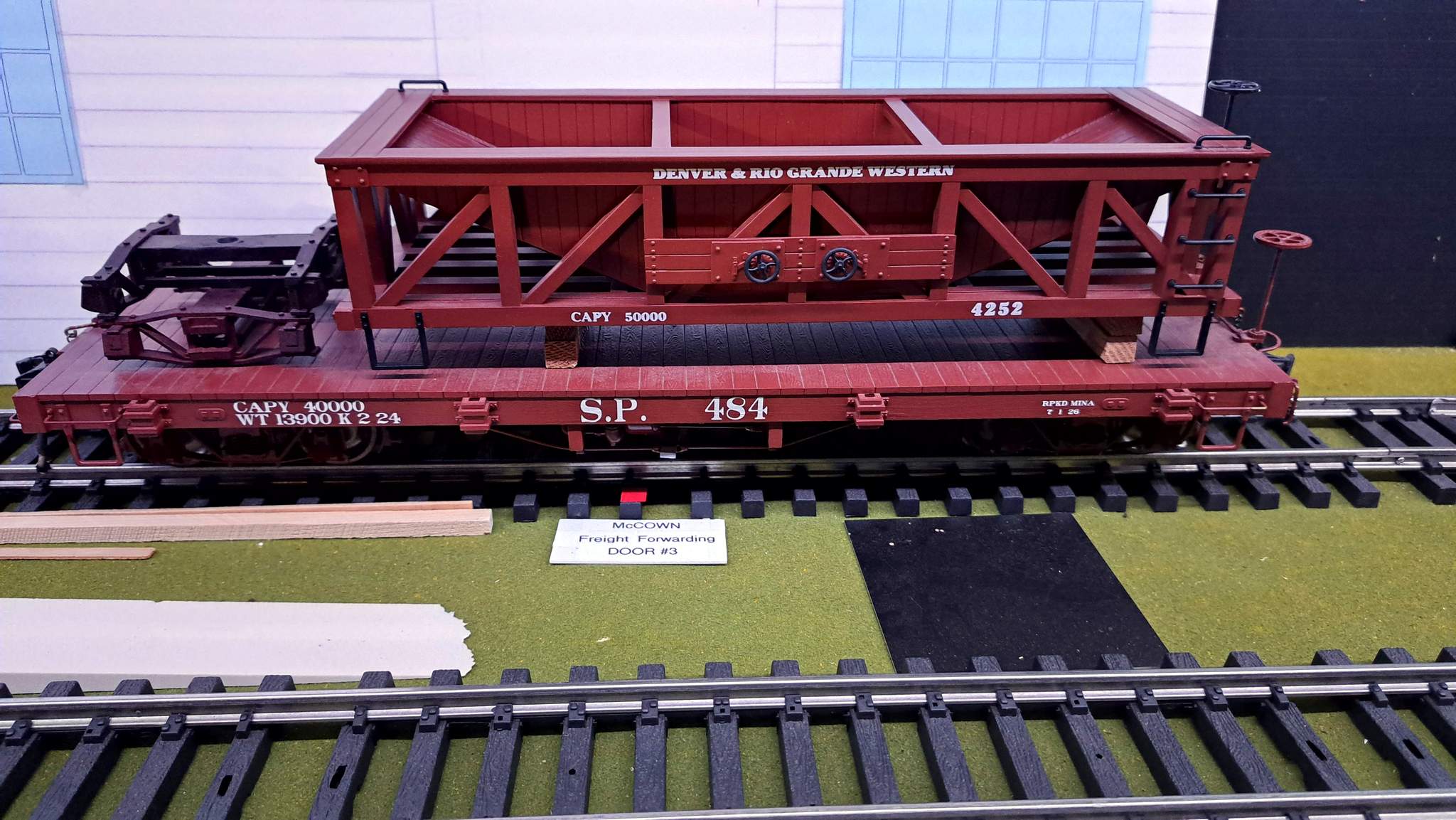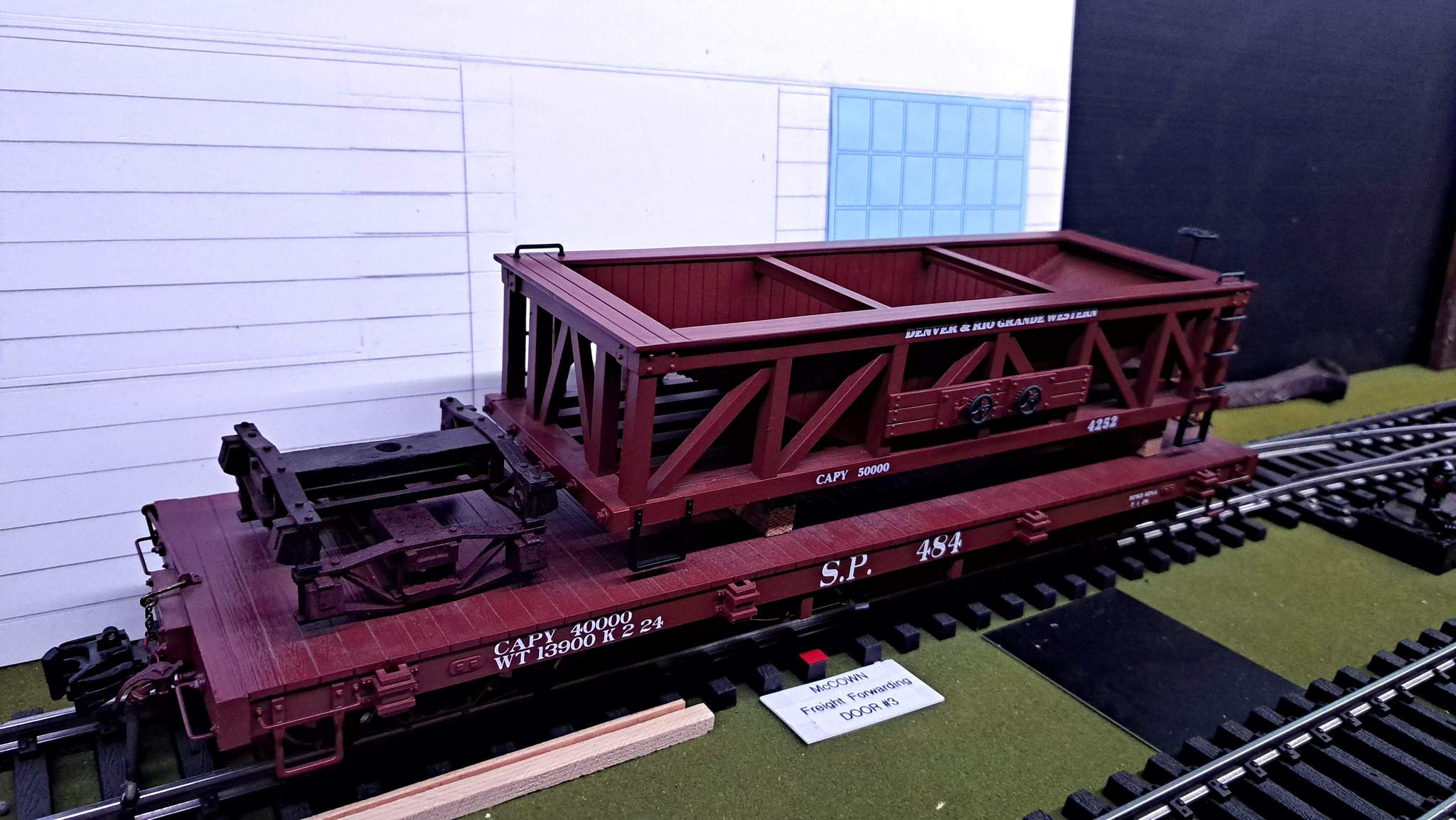I’m quite a fan of the Aristo Delton Classics wood hopper car. They are very close to the 1800’s vintage wood hoppers used on the East Broad Top. I’ve not yet been motivated to create a correct EBT model from them yet, but Kevin Strong has. A cut and move of 4 braces and changes to hardware details is really all that is needed. This photo found on the web is of a model of an EBT car. It might be Kevin’s, but there was no photo credit…

Compare that to the stock Delton design…

With this in mind, I just can’t pass up a bargain on these cars. Last week someone listed a Delton version with no trucks or wheels really cheap. I snapped it up since I have plenty of trucks and wheels that can be used. I was shocked when it arrived at how pristine it is. Not a scratch or spec of dust! The difference to the Aristo version can be seen quite easily. Aristo cleaned up the molds and changed the grabs and brake wheel shaft from plastic to brass.
Here is the newly arrived hopper on a flat with a set of trucks ready for wheels. I will body mount couplers like I have on my others…


I’ll probably get these in service this weekend. Then I need to find some open track to put it on! I’ve already used up all of the new ‘fiddle yard’ storage I built a few years ago.













